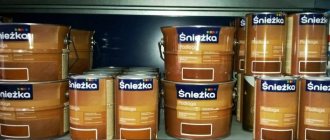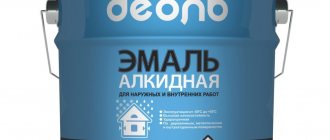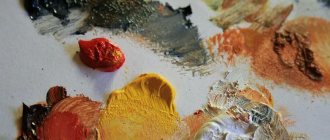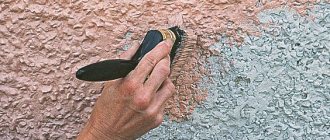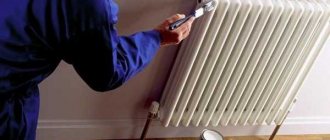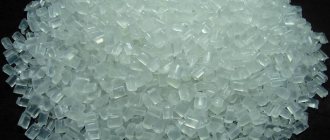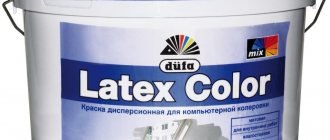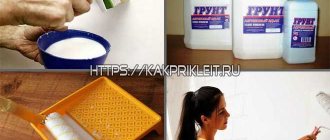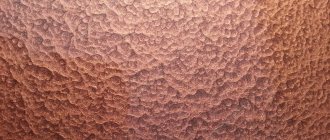How to speed up the drying process of paint?
Option 1
A special catalyst will help speed up the drying of oil paint. This product is called a desiccant. It is sold in the paint and varnish departments of construction stores. The drier is an accelerating element for polymerization, that is, its purpose is to ensure that the drying process does not take too long.
Salts of cobalt, manganese and calcium can be used as catalysts-accelerators-driers. Lead, zirconium and barium salts are often used. Salts of carboxylic acids are an ideal solution, although the modern market increasingly offers multi-metal mixed dryers that can be used for several types of paintwork materials and do not in any way affect their color and adhesive properties if you follow the included instructions.
The appendix will tell you how much drier you need to add per 1 liter so that the paint does not “curl” when applied, but simply dries faster. After using such an accelerator, difficult-to-dry oil compositions obediently polymerize. How long does it take for paint with drier to dry? Typically within 24-28 hours at room temperature.
You need to take care of the acceleration before applying the first layer, that is, you need to add the drier directly to the paint before painting, otherwise the trick will not work.
Option 2
How to quickly dry oil paint if the catalyst application time has been missed and 2-3 layers of paint are already on the wall? I would like to believe that the layers are thin enough. If you prefer a spray gun to a roller or brush, which under pressure produces an even, thin, smooth layer, and the paint is distributed over a heated surface, then the drying time is significantly reduced.
A cold wall for oil paint is a bad option. In the cold, the butter hardens, spreads poorly (think of a sandwich) and, accordingly, dries with difficulty.
Option 3
What else can you do to make the paint dry faster? Raise the temperature! High temperature is another catalyst to make the paint harden faster. At industrial facilities they use a heat gun, but for us a hair dryer or a regular infrared heater is enough. With this we will “kill two birds with one stone”: we will raise the temperature inside the room and lower the humidity.
Lack of moisture and heated air contribute to the rapid release of solvent from paint layers (oil paints do not have their own water), so the film formed during drying becomes dense and hard - it has dried out!
Option 4
When the solvent evaporates, many odorous harmful substances are released, so many people advise creating a draft in the room. Ventilation will not only remove unhealthy fumes, but will also promote quick drying. Therefore, we open the doors and windows, turn on the fan, and place the heater in the middle of the room, in no case close to the wall.
The infrared waves of the heater must penetrate through the resulting film and oil base evenly, and also evenly heat the wall underneath. However, make sure that the temperature does not rise above 60 degrees, otherwise the “boiled” paint will simply burst and crack. This is definitely not our option!
Advice! When the paint has dried, wipe the fresh surface with a soft cloth soaked in a solution of vinegar or ammonia, then it will not “stick” and will acquire a pleasant shine.
On any composition (on the packaging) you can read that it must be thoroughly mixed before use - if you neglect this instruction, the binding components may remain at the bottom, making the coating incomplete.
It is also very important that the surface to be treated is dry and free of oil and grease stains, which can directly affect the drying time of the paint. Another reason for prolonged drying may be a violation of storage conditions - all paints have a critical negative temperature. Perhaps the composition you purchased simply froze, losing its properties.
Painting problems and solutions
Let's consider typical problems that can arise in cases where paint and varnish materials are not selected correctly, the approach to painting work is carried out, the processes of painting, drying, etc. are disrupted.
Peeling
(cracking and peeling of the paint layer)
Probable reasons:
- the paint is applied in a very thick layer, especially if alkyd or oil paint was used;
- applied in unsuitable weather conditions - in extreme heat, when the top layer of paint dries faster than the base layer;
- painting was carried out in a damp room;
- Uncleaned surface is painted.
Solution:
- Remove loose paint with a wire brush and sand. If using primer paint, allow it to dry completely. For repainting, use high quality paint.
Wrinkling
(deep, irregular cracks that resemble a dirt-covered surface)
Probable reasons:
- the paint is applied too thickly, usually on a porous surface;
- the paint is applied too thickly to a surface previously painted with lower quality paint to improve the coating;
- paint has accumulated in the corners without being leveled.
Solution:
- Remove the old paint layer with a scraper or sandpaper. Clean the surface, then prime and repaint. Using high-quality latex paint can prevent cracking because the paint forms a more flexible film than water-based paints.
Roller marks
(traces of uneven texture on the painted surface)
Probable reasons:
- the wrong type of roller was used;
- low quality paint used;
- the wrong technique was used when painting with a roller.
Solution:
- Make sure to choose the right type of roller. If the roller has been washed before, make sure that the water has been squeezed out of it. Do not allow paint to pool around the edges of the roller. Start working from the ceiling and continue down in small areas. Apply paint using the M or W technique, starting from the top and without lifting the roller from the surface.
Cracking, peeling
(the paint film cracks due to aging, which leads to peeling of the paint layer)
Probable reasons:
- low quality paint was used, which does not provide tight adhesion to the surface and is not elastic;
- the paint is applied in too thin or thick a layer;
- improper surface preparation or applying paint to a wooden surface that has not been treated with primer paint;
- cracks resulting from deformation of the painted surface;
- seams and surface cracks are processed technologically incorrectly.
The problem with paint taking a long time to dry
Oil-based floor paint based on drying oil is rarely used nowadays, more often glossy varnishes based on alkyd-urethane resins with targeted additives and various solvents are used. This parquet varnish will easily adhere not only to wood (parquet, boards, chipboard or cork), but also to concrete or metal.
However, the drying time for the second layer of varnish (and at least 2-3 layers will be needed) will be 8-10 hours, the third layer will take at least 24 hours. The floor itself can be “put into operation” no earlier than in a few days: even a slight touch to the varnish surface before it has completely dried can damage its mirror-like smoothness.
Lacquer paint does not dry as quickly as we would like. And the smell! Not only is the smell pungent and unpleasant, it is also very harmful to health!
So that floor paint or paint for walls and ceilings does not disappoint you, and repairs remain in your memory as a troublesome but pleasant event, it is worth understanding the properties and features of the product you have chosen.
Types of paint depending on drying time
Oil paints and enamels take a long time to dry – up to several days. The only exception is polyurethane enamels. As for acrylic paint and water-based paint, the drying time of such paints is extremely short - a matter of hours. Finally, wallpaper paint also falls into the fast-drying category, and it only takes a few hours for it to fully set.
I tried to bake a product already covered with paint - no result, it sticks and becomes covered with dust. I applied the covers with a dry brush, undiluted paint, and diluted it in water - the result was the same.
For example, this product:
At first everything was fine, but a month later I picked it up and it began to stick unpleasantly. Am I doing something wrong or is this particular brand of paint not suitable?
